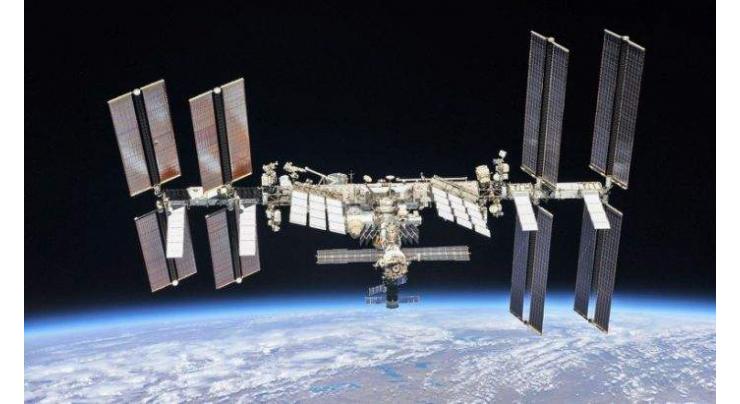
Russian Telescope Catches Rare 'Triple Elve' In Earth's Upper Atmosphere
Sumaira FH Published January 22, 2021 | 08:31 PM

A unique ultraviolet telescope installed in the Russian module of the orbital space station has documented a rare atmospheric phenomenon known as a triple elve, which is a ring of reddish light created by upward blue lightning striking from thunderclouds
MOSCOW (UrduPoint News / Sputnik - 22nd January, 2021) A unique ultraviolet telescope installed in the Russian module of the orbital space station has documented a rare atmospheric phenomenon known as a triple elve, which is a ring of reddish light created by upward blue lightning striking from thunderclouds.
Russia and Italy launched an experiment in 2019 to observe some of the most spectacular but short-lived events that occur high above the Earth in stormy weather when thunderclouds shoot bright blue jets into the stratosphere and generate phenomena with eldritch-sounding Names "elves" and "red sprites."
This light show lasts less than a millisecond and is very difficult to observe from the Earth's surface. Russia's Mini-EUSO telescope looking down on the Earth from the International Space Station can track electrical discharges as they propagate in the ionosphere, Nuclear Physics Institute senior researcher Pavel Klimov told Sputnik.
"Elves are perfectly visible. We have registered 15 to 20 of them. Their spatial-temporal propagation was observed, including rare phenomena that are called double elves a ripple chasing another one and even a triple elve, made up of three successive ripples," he said.
The European Space Agency is running a parallel experiment with the help of the space-based ASIM telescope. It published the first results in the Nature magazine this week. The article described the sightings of five blue flashes followed by a pulsating blue jet and elves.
Klimov said the European telescope lacked the capacity for high time-resolution observation and had to rely on the artistic rendition of the elve phenomenon. The Russian telescope can record events with a 2.5-microsecond precision.
"They simply look at the emission spectrum [of the electrical discharge] to figure whether they are dealing with an elve: a short-wave ultraviolet emission most likely means it is an elve," the physicist explained.
Only a tenth of research data has been transmitted from the orbital outpost to the Russian and Italian scientists, with the rest due to arrive on Earth on flash drives in June.
Both experiments are essential to understand these obscure weather phenomena happening right above our heads. The European Space Agency suggests that blue lightings and associated atmospheric events may affect the concentration of greenhouse gases in the atmosphere.
Recent Stories

Tennis: ATP Barcelona Open results - 1st update

Swiatek's perfect 10 in Stuttgart as Vondrousova stuns Sabalenka

Arandu's roads closed due to flooding

Oil tanker catches fire in Islamabad’s Blue Area

Pakistan committed to ensure safety of foreign nationals: FO

Tennis: WTA Stuttgart results - 1st update

Four passengers injured as train hit an empty vehicle

Over- speeding bus crushed to death two bike riders

Turkey's Freedom Flotilla ready to set sail for Gaza

French teen dies from heart failure after knife attack near school

Iranians appear unfazed by Isfahan blasts

UAF celebrates Int'l Chinese Language Day
More Stories From World
-
Togo lawmakers approve contested political reform
5 hours ago -
NATO must choose 'whether we indeed are allies': Zelensky
5 hours ago -
US House to vote on Ukraine, Israel, Taiwan aid package
5 hours ago -
Calls for calm after reported Israeli strike on Iran
5 hours ago -
IMF calls on EU to deepen single market integration to boost growth
5 hours ago -
Second Ecuadoran mayor killed ahead of anti-crime referendum: police
5 hours ago
-
Oil, gas drilling blocked in Alaska wilds as Biden seeks green cred
6 hours ago -
Man sets self on fire outside Trump trial
6 hours ago -

Turkey's Freedom Flotilla ready to set sail for Gaza
8 hours ago -

French teen dies from heart failure after knife attack near school
8 hours ago -

Iranians appear unfazed by Isfahan blasts
8 hours ago -

Ecuador mayor killed ahead of anti-crime referendum: police
8 hours ago



